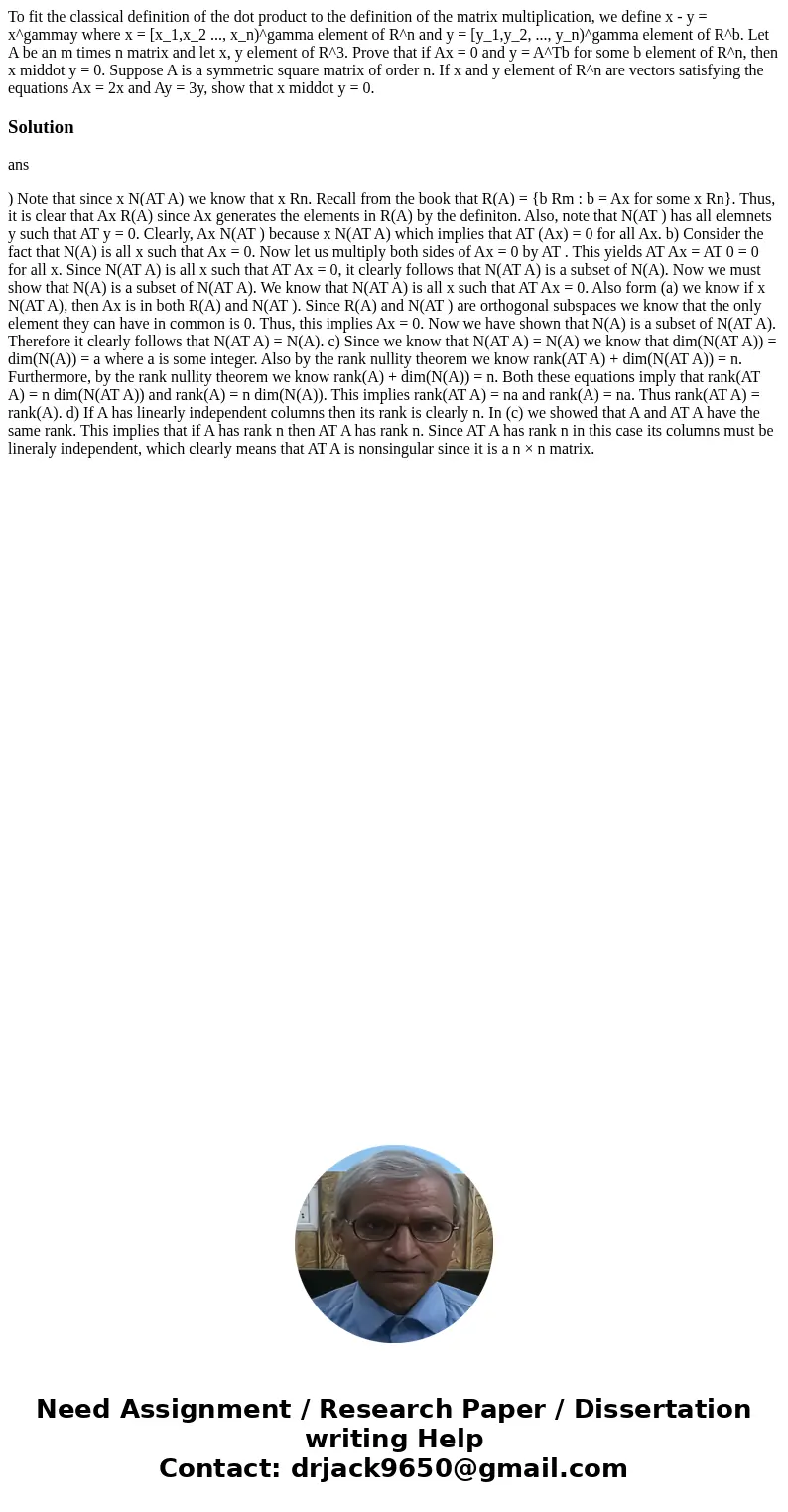To fit the classical definition of the dot product to the de
Solution
ans
) Note that since x N(AT A) we know that x Rn. Recall from the book that R(A) = {b Rm : b = Ax for some x Rn}. Thus, it is clear that Ax R(A) since Ax generates the elements in R(A) by the definiton. Also, note that N(AT ) has all elemnets y such that AT y = 0. Clearly, Ax N(AT ) because x N(AT A) which implies that AT (Ax) = 0 for all Ax. b) Consider the fact that N(A) is all x such that Ax = 0. Now let us multiply both sides of Ax = 0 by AT . This yields AT Ax = AT 0 = 0 for all x. Since N(AT A) is all x such that AT Ax = 0, it clearly follows that N(AT A) is a subset of N(A). Now we must show that N(A) is a subset of N(AT A). We know that N(AT A) is all x such that AT Ax = 0. Also form (a) we know if x N(AT A), then Ax is in both R(A) and N(AT ). Since R(A) and N(AT ) are orthogonal subspaces we know that the only element they can have in common is 0. Thus, this implies Ax = 0. Now we have shown that N(A) is a subset of N(AT A). Therefore it clearly follows that N(AT A) = N(A). c) Since we know that N(AT A) = N(A) we know that dim(N(AT A)) = dim(N(A)) = a where a is some integer. Also by the rank nullity theorem we know rank(AT A) + dim(N(AT A)) = n. Furthermore, by the rank nullity theorem we know rank(A) + dim(N(A)) = n. Both these equations imply that rank(AT A) = n dim(N(AT A)) and rank(A) = n dim(N(A)). This implies rank(AT A) = na and rank(A) = na. Thus rank(AT A) = rank(A). d) If A has linearly independent columns then its rank is clearly n. In (c) we showed that A and AT A have the same rank. This implies that if A has rank n then AT A has rank n. Since AT A has rank n in this case its columns must be lineraly independent, which clearly means that AT A is nonsingular since it is a n × n matrix.

 Homework Sourse
Homework Sourse